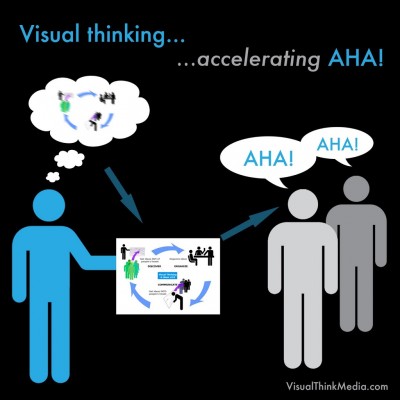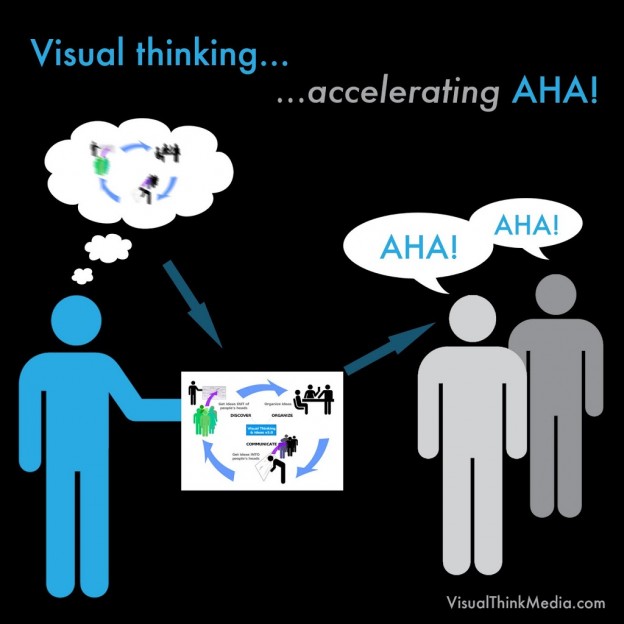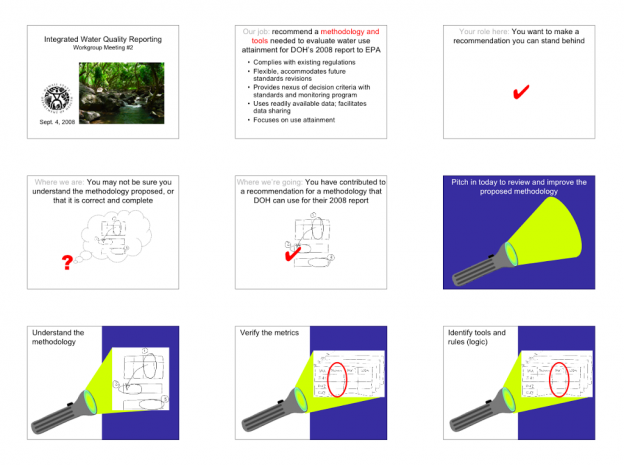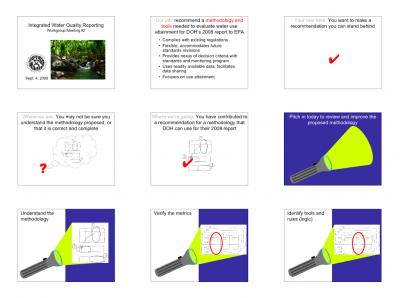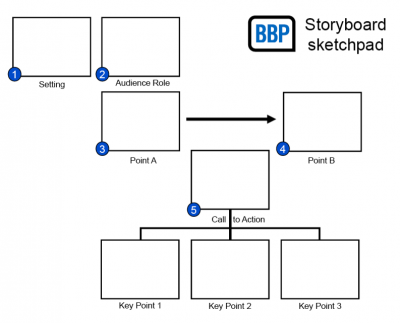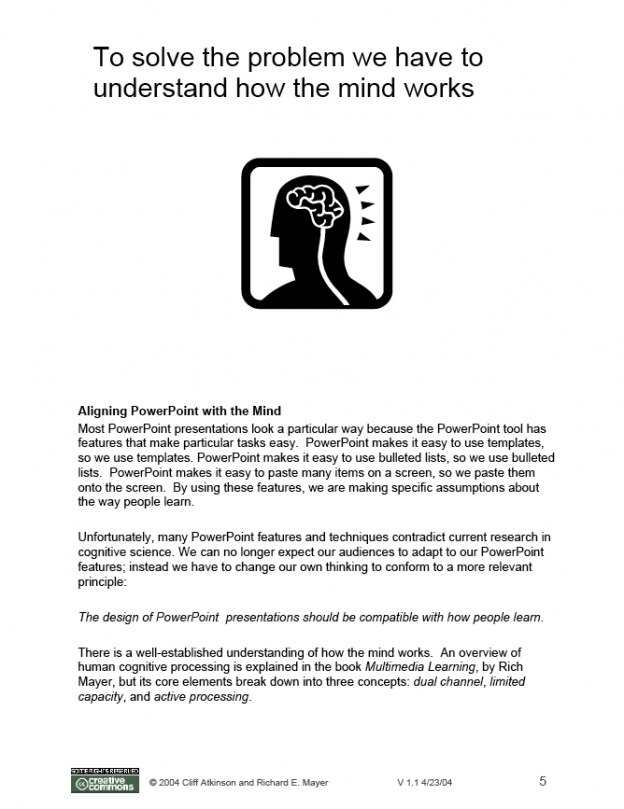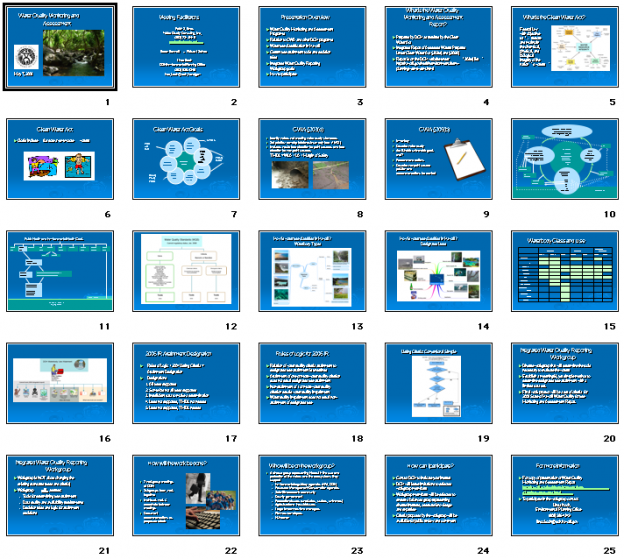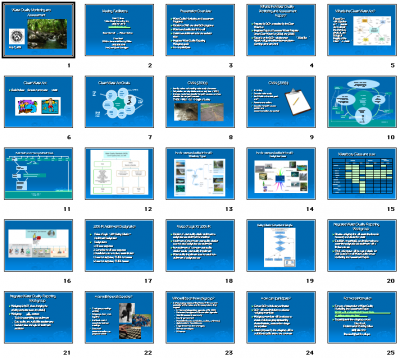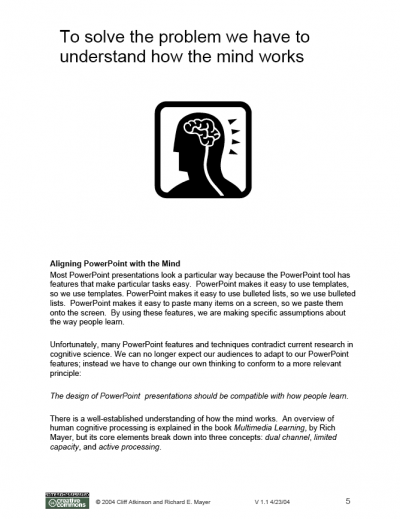
In the last few days, I’ve been studying the work of Cliff Atkinson. I’ve ordered his book, Beyond Bullet Points, from Amazon. The second edition just came out last year. He has developed a presentation formula that really makes sense to me, using the classic structure of stories to design a presentation. I’ll tell more about that another day.
You’ve probably experienced many PowerPoint presentations in your life, most bad. Cliff co-authored a paper with Richard Mayer, a researcher at UCSB, which gives insight into why they can be so mind-numbing. The fundamental reason is that they don’t correspond to how humans take in and make sense of information.
“The design of PowerPoint presentations should be compatible with how people learn.”
The typical PowerPoint presentation contains slide after slide of text, which the presenter often reads to the audience. Because we have parallel channels for processing visual and verbal input, our verbal channel gets overloaded, reading and translating the written words plus hearing what the speaker says, while our visual channel has little to do (look at the speaker, the room, other audience members) and does not receive any reinforcing input. If a presentation is to inform, the speaker should understand how best to get their message across, which is to use both the visual and the verbal channels. Give the eyes something relevant to look at, and speak the message they are trying to convey. As Bob Horn says, let words do what they do best, and let pictures do what they do best. By stimulating both channels, the brain automatically seeks to make connections between the new information in the presentation, and relate it to existing knowledge.
What I mean by “walking his talk” is that this paper exemplifies the format that Cliff recommends for presentations. It is a “notes page” view handout from PowerPoint, which shows the slide on the top of the page, and the speaker’s notes or narration on the bottom half. You can see that there is an engaging graphic on the slide, with a headline that summarizes the current topic, and useful details are given in the narration. The paper, in PDF, is “Five ways to reduce PowerPoint overload”. This is one of the most succinct and informative explanations I’ve seen about why to use visual communication, and how to do it effectively.
Cliff’s websites are well worth exploring. There is one for each version of the book. The new site is a focus for a “Beyond Bullet Points” online learning community, so much of the content is restricted to members (currently $25 annually), but there are still a lot of free resources, including PDF downloads of chapters 2 and 3 of the new book, and templates for Word and PowerPoint. Here is Cliff’s new website, corresponding to the 2007 edition of the book. The older website represents his business, Sociable Media, and also has chapter and template downloads, plus a lot of articles and interviews, and an archived forum (new discussion is moved to the new site). Here is the website corresponding to the 2005 edition of the book. I invite you to explore these resources to find inspiration, rationale, and tools for improving any presentation you may need to give.
